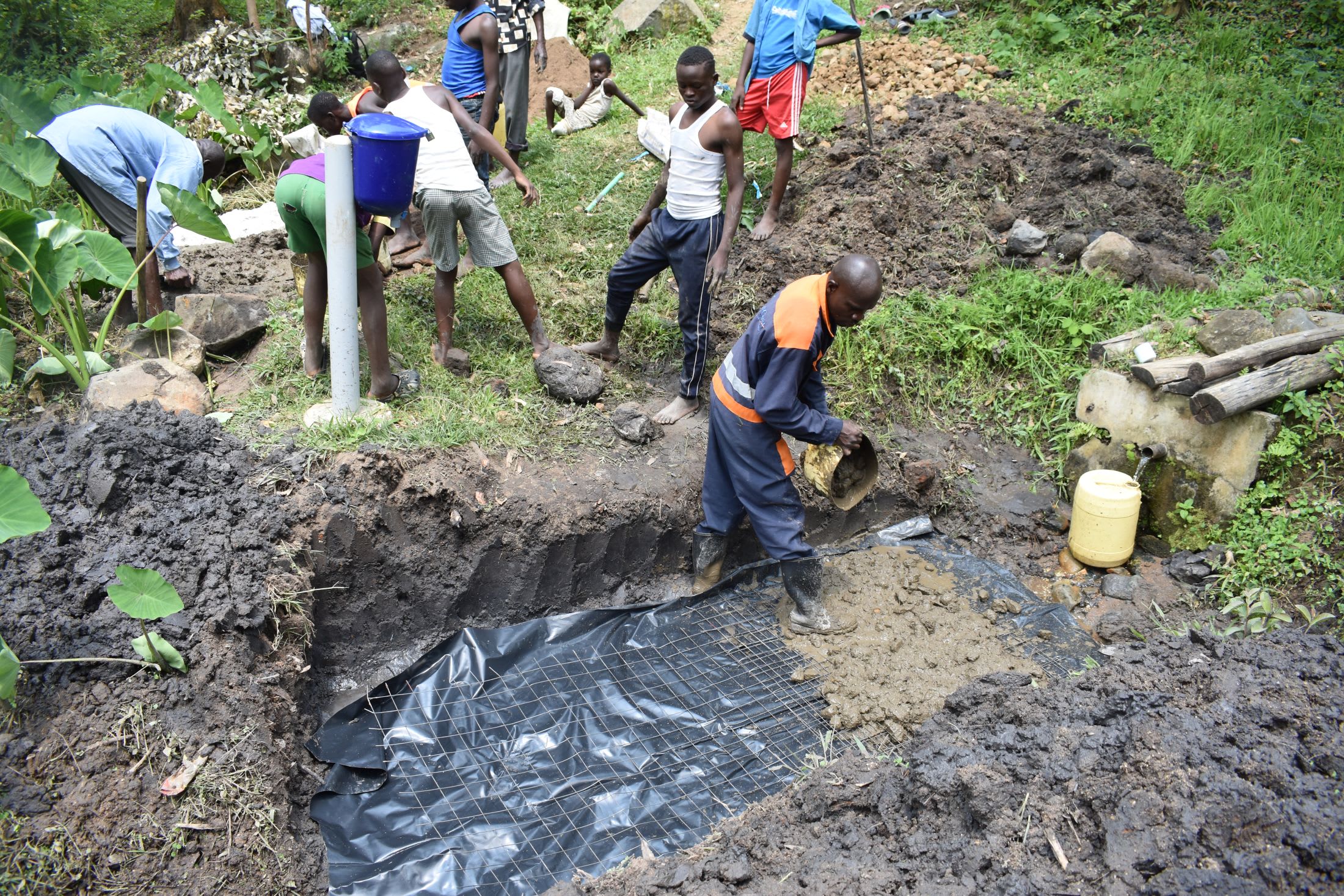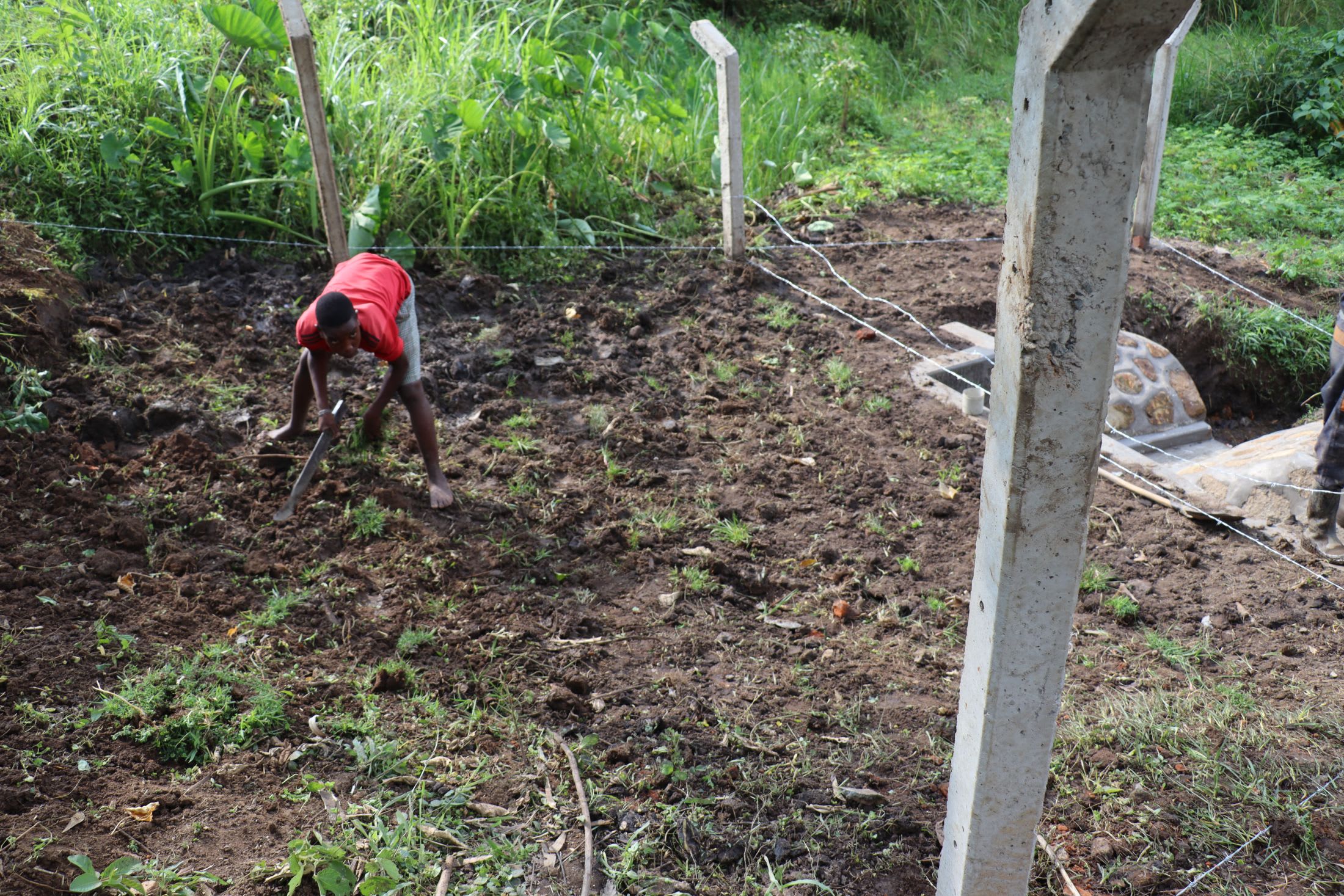The 630 people of the Nambacha Community all rely on an unprotected spring to meet their daily water needs, but collecting enough water to meet the demand is impossible. The spring faces major issues that need repair, making collecting water difficult and time-consuming.
Looking at the unprotected spring, it is easy to see that it is open to all types of contamination. Collecting and drinking water that is not filtered correctly is risky and often causes water-related illnesses like stomachache, diarrhea, and cases of typhoid.

"This water is usually dirty, and it causes me to get reinfected now and then. For example, today [I] am having a stomachache and a running stomach," said 65-year-old farmer Selfa Wakhusama, shown below collecting water from the unprotected spring.

Nine-year-old George W. agreed, "The water always has some soil, and I can not drink it. It's always hard to access water because the place is steep."

An attempt was made in the past to make the water point accessible. Still, the spring needs to be entirely reconstructed to ensure clean water is available for people to collect quickly and efficiently for a long time to come. As part of the spring protection, we will also build stairs that will make it easier for everyone to access it safely.
People have to wait in long lines that waste their valuable time that needs to be used for other important things like caring for their homes, tending to their farms, working, or attending school.

The protection of the spring so it functions efficiently and safely will enable people like Selfa and George to collect water whenever they need that they can trust and to focus on the other essential things they need to do in their lives.
The Proposed Solution, Determined Together...
At The Water Project, everyone has a part in conversations and solutions. We operate in transparency, believing it benefits everyone. We expect reliability from one another as well as our water solutions. Everyone involved makes this possible through hard work and dedication.
In a joint discovery process, community members determine their most advantageous water solution alongside our technical experts. Read more specifics about this solution on the What We're Building tab of this project page. Then, community members lend their support by collecting needed construction materials (sometimes for months ahead of time!), providing labor alongside our artisans, sheltering and feeding the builders, and supplying additional resources.
Water Access for Everyone
This water project is one piece in a large puzzle. In Kenya, Sierra Leone, and Uganda, we're working toward complete coverage of reliable, maintained water sources that guarantee public access now and in the future within a 30-minute round trip for each community, household, school, and health center. One day, we hope to report that this has been achieved!
Training on Health, Hygiene & More
With the community's input, we've identified topics where training will increase positive health outcomes at personal, household, and community levels. We'll coordinate with them to find the best training date. Some examples of what we train communities on are:
- Improved hygiene, health, and sanitation habits
- Safe water handling, storage & treatment
- Disease prevention and proper handwashing
- Income-generation
- Community leadership, governance, & election of a water committee
- Operation and maintenance of the water point
Chlorine Dispensers
Installing chlorine dispensers is an important piece of our spring protection projects. Protecting a spring provides community members with an improved water source, but it doesn’t prevent contamination once the water is collected and stored. For example, if the water is clean and the container is dirty, the water will become contaminated.
We ensure that each chlorine dispenser is filled with diluted chlorine on a consistent schedule so that people can add pre-measured drops to each container of water they collect. That way, community members can feel even more confident in the quality of their water.






 Protected Spring
Protected Spring
 Rehabilitation Project
Rehabilitation Project






























